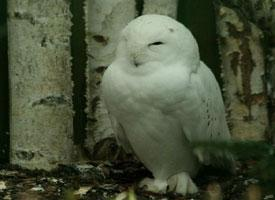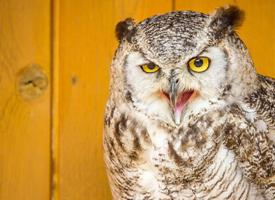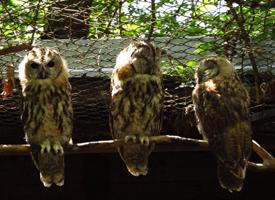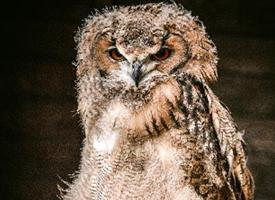
Connu aussi comme
- Puštík bradatý
Poids et mesures
| Longueur | de 61 à 84 cm |
|---|---|
| Poids | de 790 à 1454 g |
Statut de conservation
| Menacé |
Description de l'animal
The Great Grey Owl (Strix nebulosa), often evoking a mystical aura in the dense forests it inhabits, is a remarkable bird of prey known for its impressive size and distinctive appearance. As one of the largest owl species, it boasts a commanding presence, with a body length ranging from 61 to 84 cm (24 to 33 inches) and a wingspan that can extend up to 152 cm (60 inches), making it a formidable sight in the avian world.Characterized by its large, rounded head without ear tufts, the Great Grey Owl has a face framed by a noticeable facial disc, which enhances its acute hearing by directing sounds toward its ears. The eyes of this majestic bird are piercing yellow, set against a backdrop of a silver-grey, softly feathered face, providing it with a solemn and wise expression that has captivated humans for centuries.
The plumage of the Great Grey Owl is a marvel of camouflage. It exhibits a mottled pattern that blends seamlessly into the bark and branches of trees, with varying shades of grey, brown, and white. This intricate patterning not only serves as an effective disguise from predators and prey but also highlights the bird's ethereal beauty.
Native to the boreal forests across the Northern Hemisphere, including North America, Europe, and Asia, the Great Grey Owl prefers dense coniferous or mixed forests, often near open areas such as meadows or bogs. This habitat choice is closely tied to its hunting strategies. The owl is a silent hunter, utilizing its exceptional hearing, aided by its facial disc, to detect prey moving beneath the snow or vegetation. Its diet primarily consists of small rodents, with voles being a favored choice, which it catches with precision and agility.
Despite its size, the Great Grey Owl is a master of stealth. Its flight is remarkably silent, thanks to the specialized feather structure that muffles the sound, allowing it to approach its prey or navigate its territory unnoticed. This silent flight, combined with its nocturnal habits, adds to the owl's mystique, often making it a ghostly figure in the night.
Breeding and nesting habits of the Great Grey Owl are closely tied to the abundance of prey. These birds do not build their own nests but rather use existing structures such as the abandoned nests of other large birds, platforms in dense foliage, or natural tree cavities. The female lays a clutch of 2 to 5 eggs, which she incubates for about 30 days while being fed by the male. The young owlets are dependent on their parents for food and protection for several weeks before they are ready to fledge and explore the world on their own.
Conservation status of the Great Grey Owl varies by region, but habitat destruction and climate change pose significant threats to their populations. Efforts to preserve their natural habitats and monitor their population dynamics are crucial for ensuring the survival of this magnificent species.
The Great Grey Owl, with its imposing appearance, silent flight, and deep connection to the ancient forests, remains a symbol of the wild's untouched and mysterious beauty. It continues to inspire and intrigue wildlife enthusiasts, researchers, and the general public alike, holding a special place in the folklore and natural history of the regions it graces with its presence.
Carte de répartition
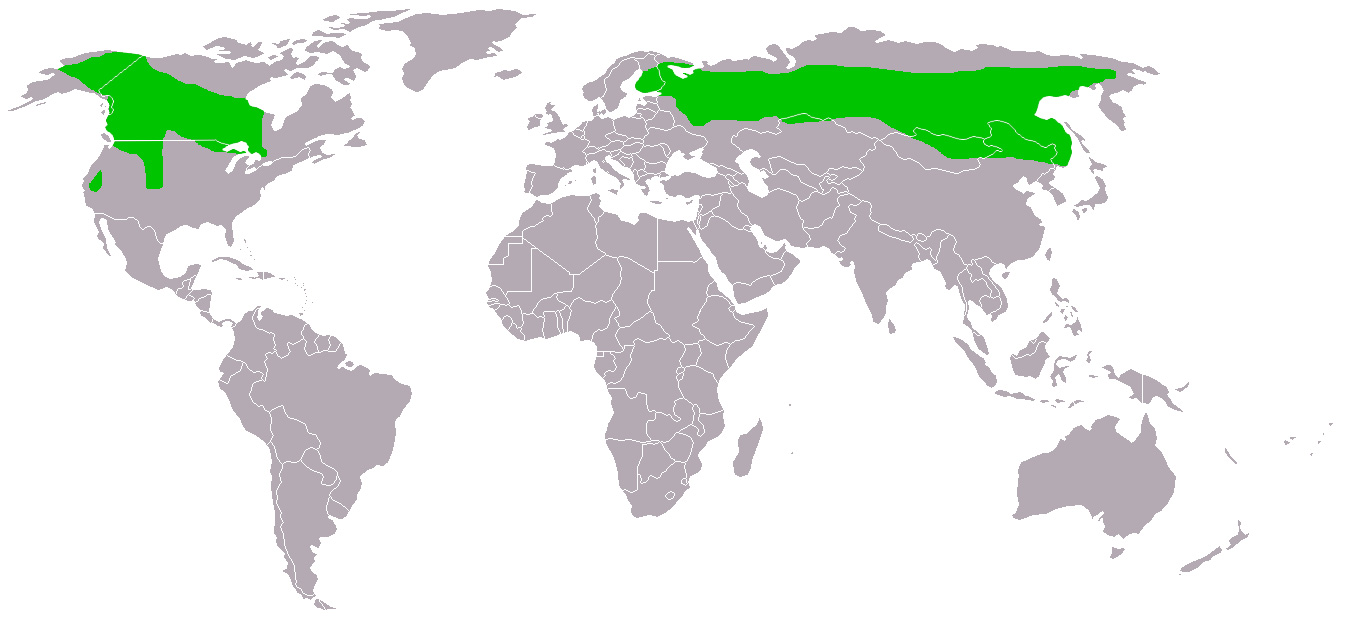
Animaux similaires
Nouvelles photos d'animaux
Top 10 des animaux
- Dolphin gull (Leucophaeus scoresbii)
- Diana monkey (Cercopithecus diana)
- Moustached guenon (Cercopithecus cephus)
- Galápagos tortoise (Geochelone nigra complex)
- Japanese macaque (Macaca fuscata)
- Stone loach (Barbatula barbatula)
- Russian tortoise (Testudo horsfieldii)
- Greek tortoise (Testudo graeca)
- Common flying dragon (Draco volans)
- Vendace (Coregonus albula)
